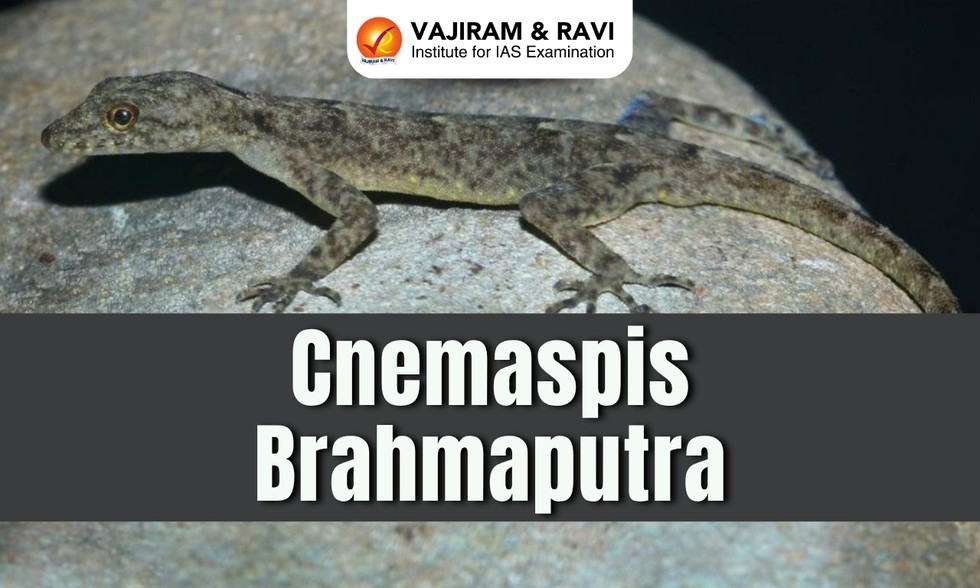About Cnemaspis Brahmaputra:
- It was found at Dirgheswari Temple on the northern bank of the Brahmaputra river in Assam.
- The new species belongs to the Cnemaspis podihuna clade, a group of small, diurnal geckos previously thought to be largely restricted to Sri Lanka.
- Its discovery in Assam strengthens the evidence for an ancient biogeographic link between Sri Lanka and India’s northeast, reflecting historical faunal exchanges across the Indian subcontinent.
- The new species is genetically and morphologically distinct from its Sri Lankan relatives, showing significant evolutionary divergence.
- Features of Cnemaspis Brahmaputra
- It is distinguished by its larger body size but with fewer mid-body scale rows, more ventral scale rows across the belly, no tubercles on lower flanks, and three enlarged rows of thigh scales parallel to the enlarged femoral scale row.
- It is the second species of the genus Cnemaspis known from the northeastern region. The first, Cnemaspis assamensis, was described in 2000.
- Both species are members of the podihuna clade and are restricted to the Brahmaputra River valley.
- They occur on opposite banks of the river and have significant genetic differences.
